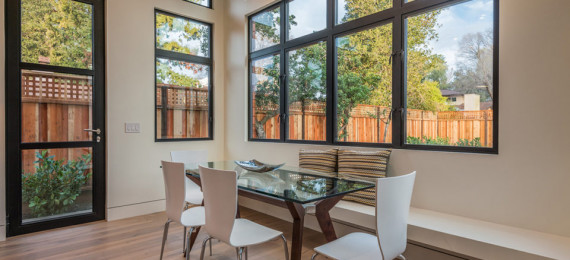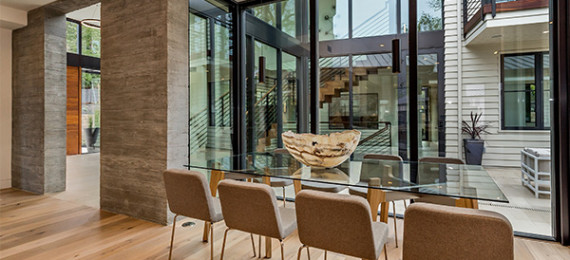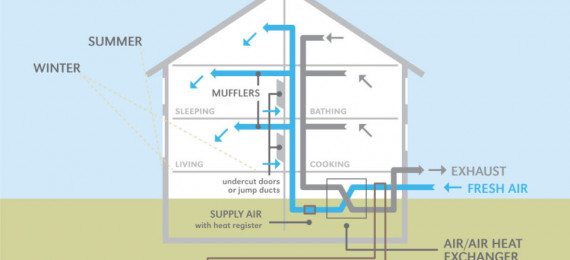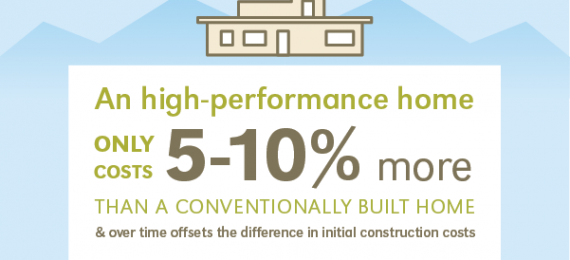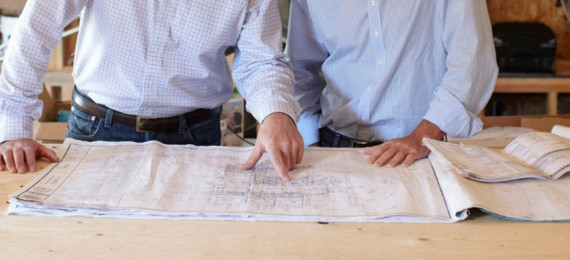These resources are from an archived version of our website. Want to see what we’ve been up to lately? Check out our new website.
Category: passive home
Archives - Clarum Homes » Archive by category 'passive home'
Staying Cool the High-Performance Way
Posted by Clarum Homes on July 5, 2021 | Categories: comfort, custom homes, energy efficiency, high performance homes, passive home | No comment
With the 4th of July weekend officially behind us, it's safe to say that summer is well underway - and it’s getting hot out there. While we’re grateful for the sunshine in Palo Alto, we’re also grateful to have cool, comfortable homes to retreat to when the heat gets intense. It's no wonder power bills start to climb around this time of year, as air conditioners kick on to combat the climbing temperatures. Unfortunately, most conventionally built homes are incredibly inefficient in how they manage temperature. As much as 40% of a home’s cooling and heating loss is due to air leakage...
Read More
How Your Custom Home Can Keep Your Family Healthy
Posted by Clarum Homes on July 28, 2020 | Categories: California home builder, comfort, custom homes, health, high performance homes, passive home | No comment
Not surprisingly, one of the primary concerns of the modern homeowner is the health and safety of their family. And it makes sense: even before shelter-in-place restrictions, the average American already spent up to 90% of their time indoors. Our current era has introduced new motivations for a healthful approach, and has brought some key wellness-related trends to the forefront in new custom homes. Fortunately, at Clarum, this was a priority for us long before COVID-19. One of our values is to create healthy environments: we’re committed to going beyond aesthetics when it comes...
Read More
Enjoying the Great Outdoors (Without Leaving the House)
Posted by Clarum Homes on June 18, 2020 | Categories: comfort, custom homes, energy efficiency, high performance homes, Modern Homes, passive home | No comment
Summer is officially here – and for those of us in California, it’s a time when we want to enjoy the great outdoors more than ever. Spending time outside is the perfect way to get fresh air, exercise, and improve mental health. However, with physical distancing measures still in place, many are looking to their own backyards for comfort, distraction and a connection to nature without straying too far from home. Even before the days of COVID-19, outdoor environments have always been a top priority for homeowners. Research from the National Association of Home Builders and Better...
Read More
Sustainability Comes Home
Posted by Clarum Homes on April 3, 2020 | Categories: comfort, custom homes, energy efficiency, health, high performance homes, luxury homes, passive home | No comment
For many people the idea of sustainability has been a concept without a tangible connection but that is quickly changing. Now that we are all spending so much time indoors, it’s clearer than ever how important it is to be intentional about our space. Having a home office might have been a nice-to-have before but, with remote work becoming more common, a home that supports the new ways we live and work will be essential. From how it’s laid out to where you get your power, building a sustainable home is about building a home that takes care of you and your family. Passive and Passive...
Read More
A Bright Future with a Smaller Footprint
Posted by Clarum Homes on March 2, 2020 | Categories: custom homes, energy efficiency, high performance homes, passive home | No comment
Now that Zero Net Energy (ZNE) is the default for all new residential homes, we’re going to see a tremendous change in the way houses are built in California. While ZNE is a positive development for the environment and the reliability of our electric grid, not all builders will have the experience to craft homes that will excel 2020 Solar Mandate. To understand this a bit better, let’s look at two families that represent clients we see at Clarum: the Parkers and the Joneses. Matt and Sarah Parker – On the go Matt Parker is a busy guy. As a lead partner in his private equity...
Read More
Passive-certified vs. Passive-inspired: How to choose which one is right for you
Posted by Clarum Homes on July 1, 2019 | Categories: custom homes, energy efficiency, high performance homes, passive home | No comment
A passive-certified home is one that employs a set of advanced building technologies to achieve extreme energy efficiency. Energy consumption is reduced by up to 90% compared to a conventionally-built home. A passive-inspired home incorporates many of the same building techniques and materials found in a passive-certified home, but without the rigor of certification and at a slightly lower price tag. Keep reading to understand the key differences between these two sustainable home options and choose which route is best for you. What is Passive-Certified? If you would like to part...
Read More
The ROI of a high-performance home
Posted by Clarum Homes on April 1, 2019 | Categories: custom homes, energy efficiency, high performance homes, passive home | Tags: custom homes, energy efficiency, high performance homes, passive home | No comment
Building a green, high-performance home will typically always cost more than the same home built to standard building codes. The advantage is the long-term energy savings over the life of the home and the improved quality of life — which for many is priceless. Using California Code as a baseline of construction standards, these tables show the costs differences in initial construction costs, as well as the energy efficiency gains and ROI potential. Costs and return on investment People are often surprised to learn that a high-performance home only costs 5-10% more than a conventionally-built...
Read More
How does energy efficiency impact a home’s carbon footprint?
Posted by Clarum Homes on March 4, 2019 | Categories: custom homes, energy efficiency, passive home | No comment
The cost of energy is rising rapidly — and not just in dollars. Our environment is also paying the price: non-renewable energy consumption, carbon emissions, and pollution. In the U.S., 39% of all greenhouse gas emissions come from buildings. We use energy — electricity, gas, and water — to keep our houses at a comfortable temperature, our showers hot, our lights on, and our gardens green, all of which generates carbon dioxide (CO2). Your carbon footprint is the sum of all emissions of CO2, which are induced by your activities in a given time frame. High-performance homes support...
Read More
At Clarum, we work with families to leverage Passive House home building practices for extreme performance opportunities in their custom home building projects. A Passive-Certified home is one that employs a set of advanced building technologies to achieve extreme energy efficiency. Energy consumption is reduced by up to 90% compared to a conventionally-built home. The History of Passive Homes The Passivhaus house concept originated in 1988 with a conversation between Professors Bo Adamson of Lund University, Sweden and Wolfgang Feist of the Institute for Housing and the Environment,...
Read More
Green Home Certification: To certify or not to certify? What is the real value?
Posted by Clarum Homes on October 1, 2018 | Categories: custom homes, energy efficiency, health, high performance homes, passive home | No comment
When an architect, designer, and builder set out with the intention of building a high-performance home, they often determine a sustainability goal based on an established certification program. These third-party certification programs define the parameters and expectations of the custom home’s ongoing energy savings. They include suggested materials, recommend efficiency engineering practices and can demand applied environmental quality controls. There are some popular and emerging high-performance home certification programs on the market today. Homeowners are increasingly familiar with...
Read More

